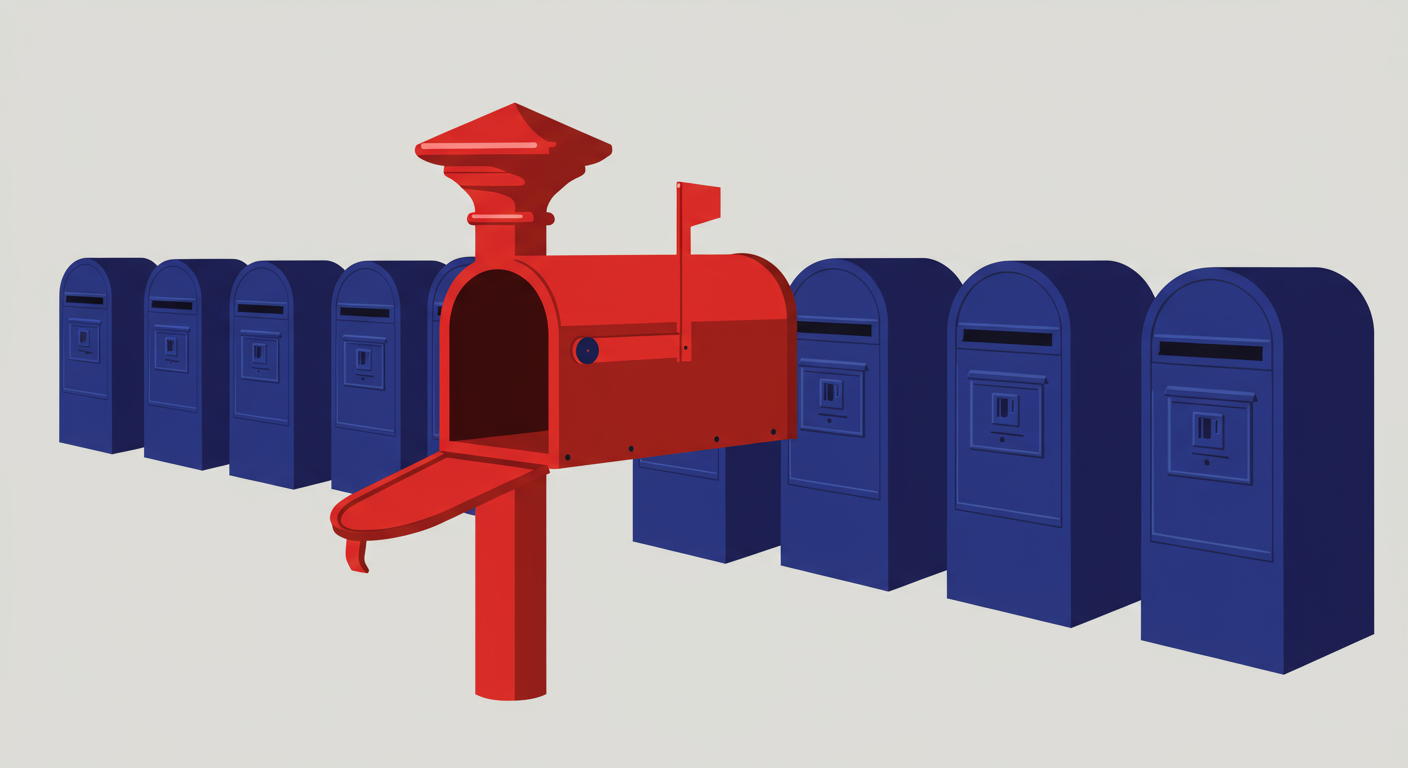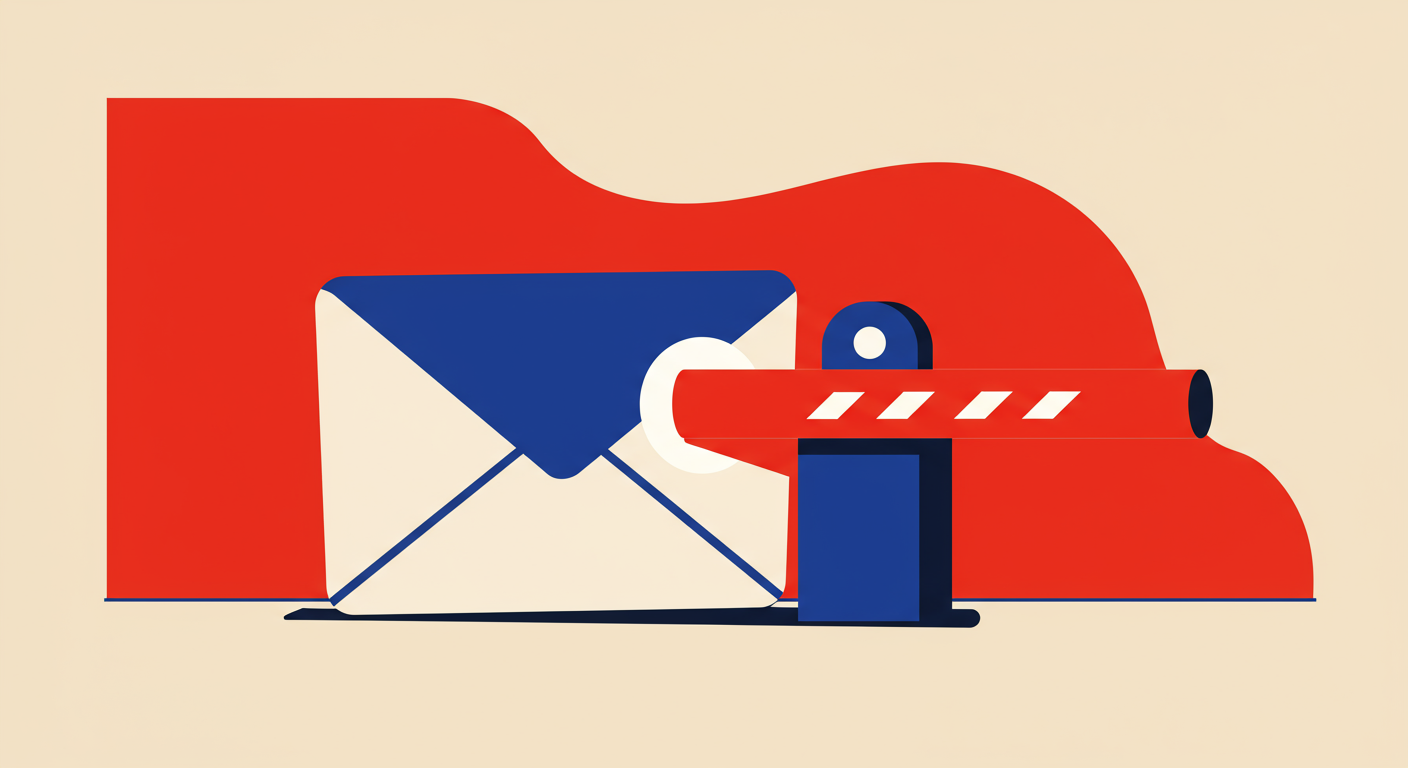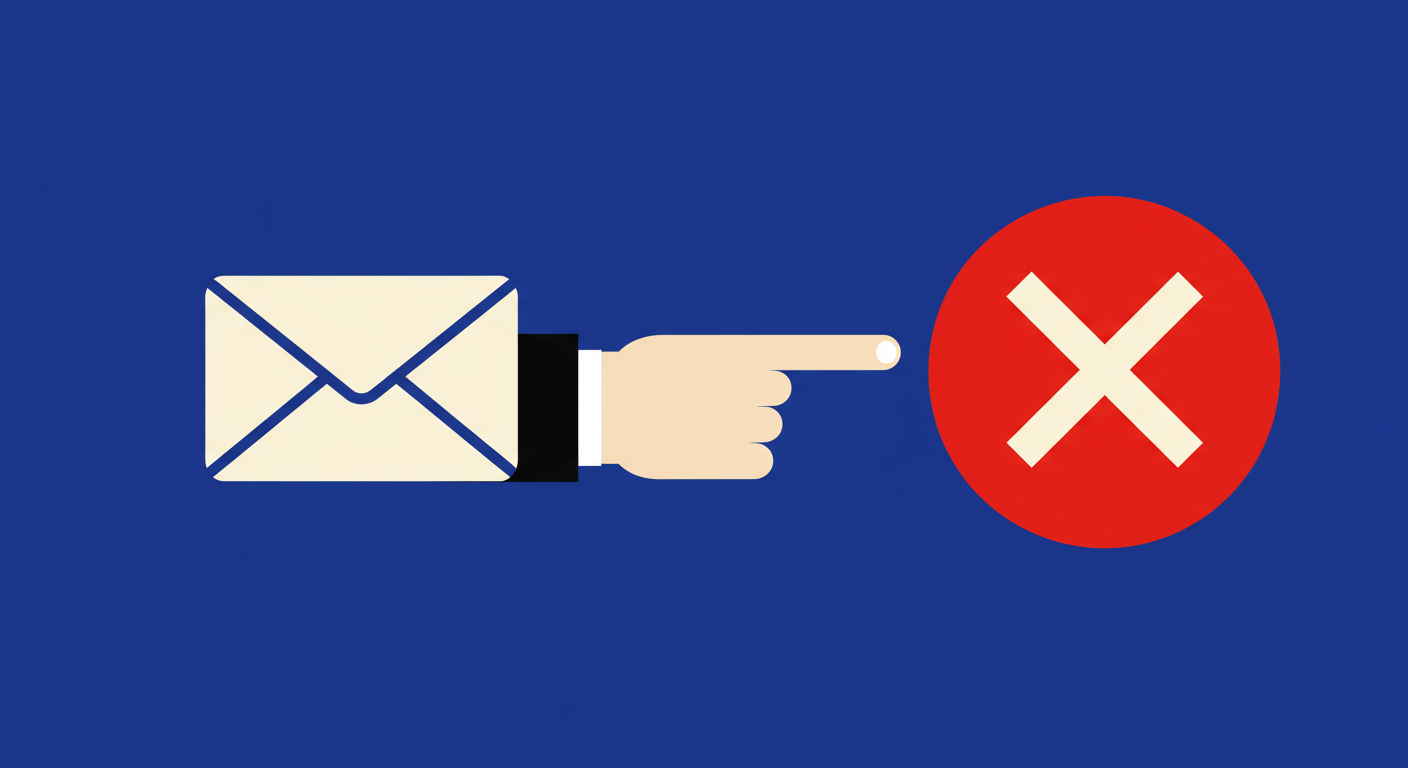What happens when your IP gets blocklisted?



It’s a scenario that can cause immediate panic. You’re sending emails, browsing the web, or running your business, and suddenly, you hit a wall. Your emails start bouncing, or a website denies you access. One of the most common, yet misunderstood, reasons for this is that your IP address has been blocklisted. This can have a significant and immediate negative impact, especially when it comes to email deliverability.
An IP address is essentially your device's mailing address on the internet. Mailbox providers and security systems use this address to identify the source of incoming connections, including emails. An IP blocklist, or blacklist, is a real-time database of IP addresses that have been flagged for suspicious behavior, most commonly for sending spam. If your IP address ends up on one of these lists, services that use the list will block or filter traffic from you.
The consequences range from inconvenient to catastrophic for a business. It can halt your email marketing campaigns, prevent important transactional emails from reaching customers, and damage your sender reputation for a long time. Understanding what happens when your IP is blocklisted is the first step toward fixing the issue and preventing it from happening again.
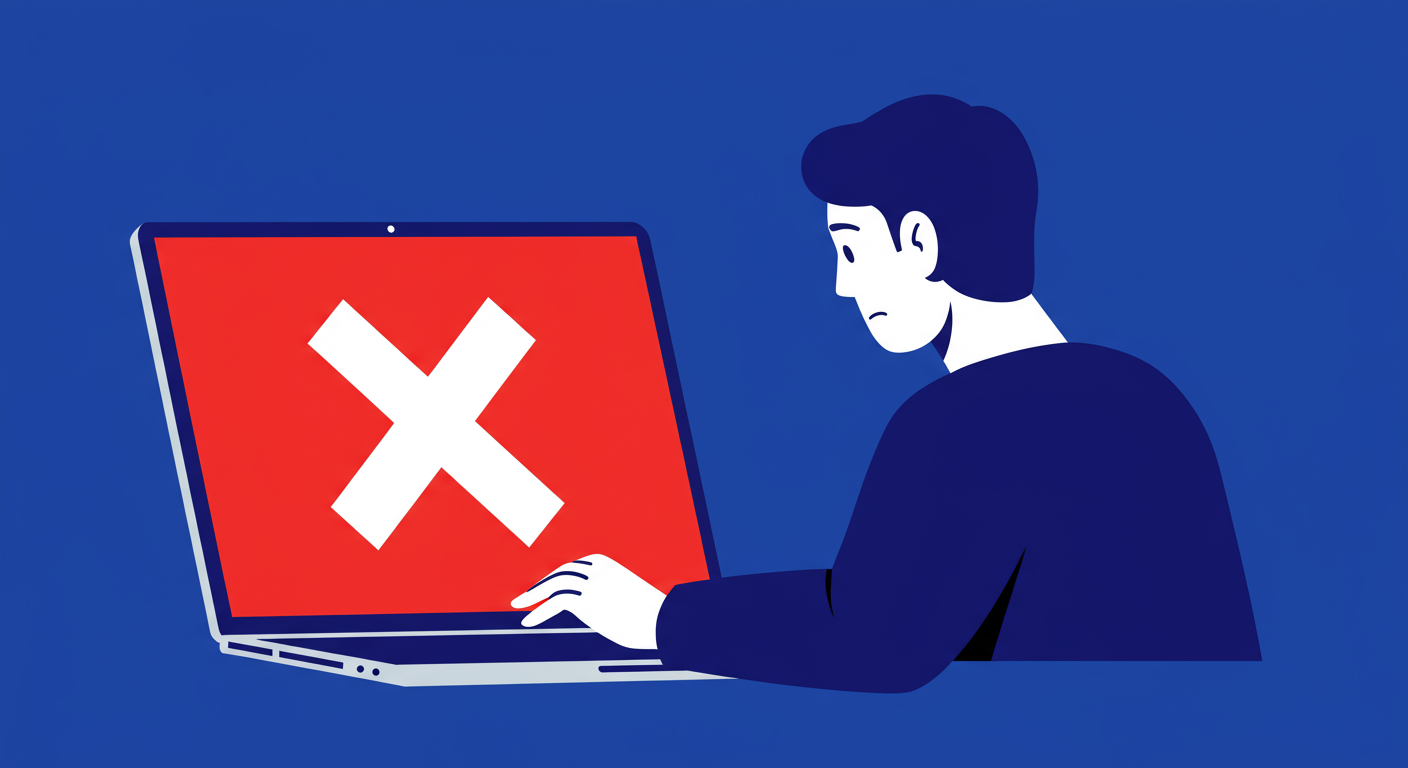
An IP address doesn't just randomly land on a blacklist. A listing is triggered by specific activities that mailbox providers and anti-spam services deem harmful or suspicious. The most common cause is sending emails that generate a high number of spam complaints. If enough recipients mark your messages as spam, your IP address will be flagged. This is a clear signal to providers that the mail coming from your IP is unwanted.
Another major factor is poor email list hygiene. Sending emails to invalid or non-existent addresses results in hard bounces. High bounce rates are a red flag. Similarly, hitting a spam trap, which is an email address used by providers to identify spammers, almost guarantees a blocklisting. These traps look like real email addresses but don't belong to a person, so any email sent to them is, by definition, unsolicited.
It's also possible you're not directly at fault. Here are a few other reasons this can happen:
So, what happens when your IP is blacklisted? The primary and most painful consequence is a severe drop in email deliverability. Emails sent from a blacklisted IP address are often rejected by receiving mail servers. This results in a high number of bounced emails, with error messages explicitly stating that the message was rejected due to a blocklist entry. Your communication channel is effectively cut off.
Even if your emails aren't outright rejected, they are highly likely to be sent directly to the recipient's spam or junk folder. From the sender's perspective, the email appears to have been delivered successfully, but the recipient never sees it in their primary inbox. This silence can be deceiving and cripples the effectiveness of any email campaign, whether it’s for marketing, sales, or critical transactional updates like password resets and order confirmations.
Beyond email, an IP blacklist can also prevent you from accessing certain websites or online services. Web Application Firewalls (WAFs) often use IP blocklists to deny access to known malicious actors. If your IP ends up on one of these lists, you might find yourself unable to log in to services that are essential for your work, seeing messages like "Access Denied. Your IP Address Is Blacklisted." This complicates troubleshooting and can disrupt your daily operations.
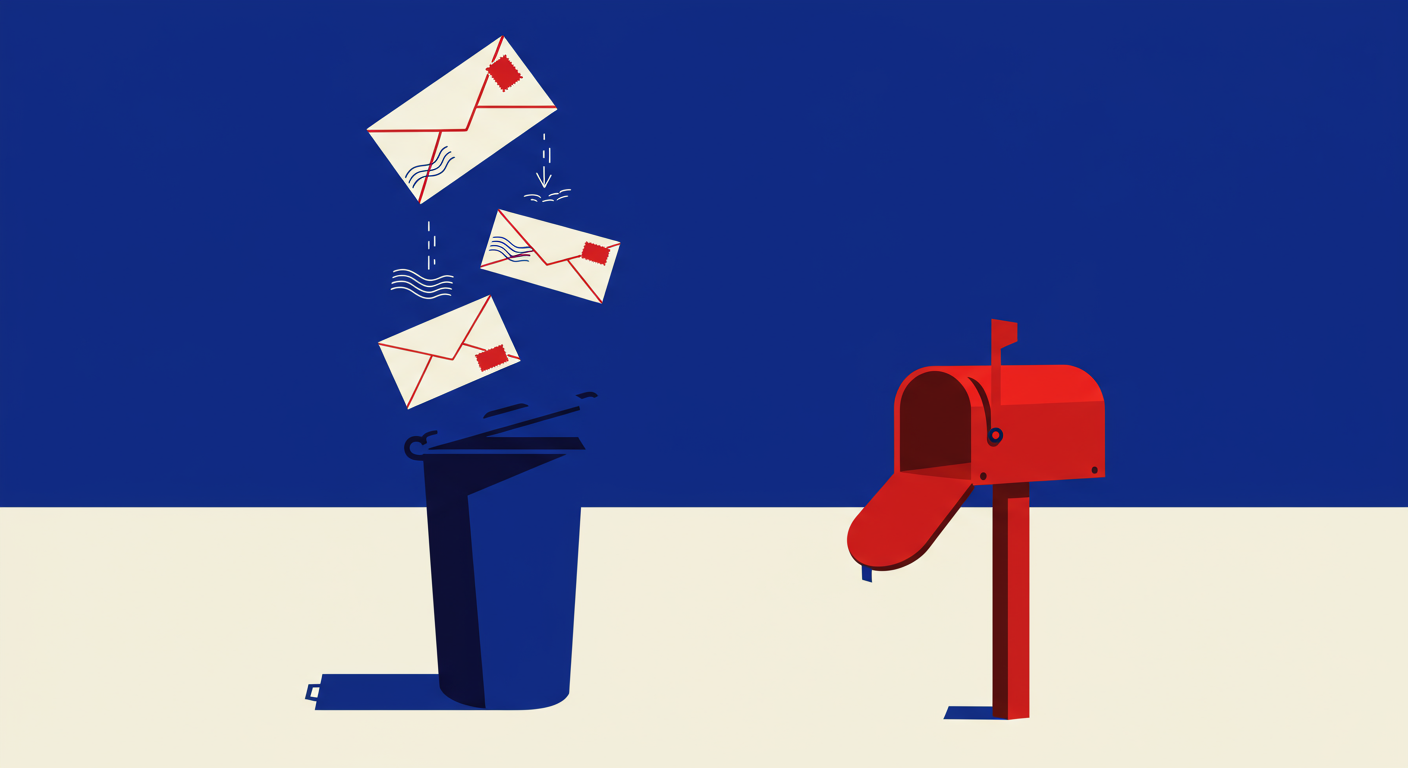
If you suspect your IP has been blocklisted, the first step is to confirm it. A sudden increase in bounced emails is a strong indicator, but you'll need to verify the listing to take action. There isn't just one master blacklist; there are dozens of different ones (Spamhaus, Barracuda, SORBS, to name a few), and mailbox providers often use a combination of public and private lists.
To run a new blacklist check, you need to know your sending IP address. You can typically find this in the headers of an email you've sent. Once you have the IP, you can use a blacklist checking tool. These tools will query multiple blocklists at once to see if your IP appears on any of them. At Suped, we offer a simple tool to do just that.
 Spamhaus
Spamhaus 0Spam
0Spam Cisco
Cisco NoSolicitado
NoSolicitado URIBL
URIBL abuse.ro
abuse.ro ALPHANET
ALPHANET Anonmails
Anonmails Ascams
Ascams BLOCKEDSERVERS
BLOCKEDSERVERS Calivent Networks
Calivent Networks EFnet
EFnet
 JustSpam
JustSpam Kempt.net
Kempt.net
 NordSpam
NordSpam RV-SOFT Technology
RV-SOFT Technology
 Scientific Spam
Scientific Spam Spamikaze
Spamikaze SpamRATS
SpamRATS SPFBL
SPFBL Suomispam
Suomispam System 5 Hosting
System 5 Hosting Team Cymru
Team Cymru Validity
Validity www.blocklist.de Fail2Ban-Reporting Service
www.blocklist.de Fail2Ban-Reporting Service ZapBL
ZapBL 2stepback.dk
2stepback.dk Fayntic Services
Fayntic Services ORB UK
ORB UK technoirc.org
technoirc.org TechTheft
TechTheft Spamhaus
Spamhaus 0Spam
0Spam Cisco
Cisco NoSolicitado
NoSolicitado URIBL
URIBL abuse.ro
abuse.ro ALPHANET
ALPHANET Anonmails
Anonmails Ascams
Ascams BLOCKEDSERVERS
BLOCKEDSERVERS Calivent Networks
Calivent Networks EFnet
EFnet
 JustSpam
JustSpam Kempt.net
Kempt.net
 NordSpam
NordSpam RV-SOFT Technology
RV-SOFT Technology
 Scientific Spam
Scientific Spam Spamikaze
Spamikaze SpamRATS
SpamRATS SPFBL
SPFBL Suomispam
Suomispam System 5 Hosting
System 5 Hosting Team Cymru
Team Cymru Validity
Validity www.blocklist.de Fail2Ban-Reporting Service
www.blocklist.de Fail2Ban-Reporting Service ZapBL
ZapBL 2stepback.dk
2stepback.dk Fayntic Services
Fayntic Services ORB UK
ORB UK technoirc.org
technoirc.org TechTheft
TechTheft Spamhaus
Spamhaus 0Spam
0Spam Cisco
Cisco NoSolicitado
NoSolicitado URIBL
URIBL abuse.ro
abuse.ro ALPHANET
ALPHANET Anonmails
Anonmails Ascams
Ascams BLOCKEDSERVERS
BLOCKEDSERVERS Calivent Networks
Calivent Networks EFnet
EFnet
 JustSpam
JustSpam Kempt.net
Kempt.net
 NordSpam
NordSpam RV-SOFT Technology
RV-SOFT Technology
 Scientific Spam
Scientific Spam Spamikaze
Spamikaze SpamRATS
SpamRATS SPFBL
SPFBL Suomispam
Suomispam System 5 Hosting
System 5 Hosting Team Cymru
Team Cymru Validity
Validity www.blocklist.de Fail2Ban-Reporting Service
www.blocklist.de Fail2Ban-Reporting Service ZapBL
ZapBL 2stepback.dk
2stepback.dk Fayntic Services
Fayntic Services ORB UK
ORB UK technoirc.org
technoirc.org TechTheft
TechTheft Spamhaus
Spamhaus 0Spam
0Spam Cisco
Cisco NoSolicitado
NoSolicitado URIBL
URIBL abuse.ro
abuse.ro ALPHANET
ALPHANET Anonmails
Anonmails Ascams
Ascams BLOCKEDSERVERS
BLOCKEDSERVERS Calivent Networks
Calivent Networks EFnet
EFnet
 JustSpam
JustSpam Kempt.net
Kempt.net
 NordSpam
NordSpam RV-SOFT Technology
RV-SOFT Technology
 Scientific Spam
Scientific Spam Spamikaze
Spamikaze SpamRATS
SpamRATS SPFBL
SPFBL Suomispam
Suomispam System 5 Hosting
System 5 Hosting Team Cymru
Team Cymru Validity
Validity www.blocklist.de Fail2Ban-Reporting Service
www.blocklist.de Fail2Ban-Reporting Service ZapBL
ZapBL 2stepback.dk
2stepback.dk Fayntic Services
Fayntic Services ORB UK
ORB UK technoirc.org
technoirc.org TechTheft
TechTheft Spamhaus
Spamhaus 0Spam
0Spam Cisco
Cisco NoSolicitado
NoSolicitado URIBL
URIBL abuse.ro
abuse.ro ALPHANET
ALPHANET Anonmails
Anonmails Ascams
Ascams BLOCKEDSERVERS
BLOCKEDSERVERS Calivent Networks
Calivent Networks EFnet
EFnet
 JustSpam
JustSpam Kempt.net
Kempt.net
 NordSpam
NordSpam RV-SOFT Technology
RV-SOFT Technology
 Scientific Spam
Scientific Spam Spamikaze
Spamikaze SpamRATS
SpamRATS SPFBL
SPFBL Suomispam
Suomispam System 5 Hosting
System 5 Hosting Team Cymru
Team Cymru Validity
Validity www.blocklist.de Fail2Ban-Reporting Service
www.blocklist.de Fail2Ban-Reporting Service ZapBL
ZapBL 2stepback.dk
2stepback.dk Fayntic Services
Fayntic Services ORB UK
ORB UK technoirc.org
technoirc.org TechTheft
TechTheftRunning a check will give you a clear picture of your situation. It will tell you not only if you are listed, but which specific blacklists you are on. This is crucial information, as the process for getting removed can vary from one blacklist to another.
Finding your IP on a blacklist can be stressful, but it's usually fixable. The process of getting your IP address removed is called 'delisting'. Most blocklist operators provide a self-service removal process on their website. You'll need to visit the website of the specific blacklist where you are listed, look up your IP, and follow their instructions for requesting removal.
However, before you request delisting, you must fix the underlying issue that got you listed in the first place. If you don't, you'll simply be blacklisted again, and future delisting requests will be much more difficult. This means securing any compromised systems, cleaning your email lists, adjusting your sending frequency, and ensuring all your practices align with deliverability best practices. Only then should you proceed with the removal request.
Prevention is always better than cure. To stay off blacklists, maintain a stellar sender reputation. This involves regularly cleaning your email lists to remove inactive subscribers, using a double opt-in process to confirm interest, never purchasing email lists, and closely monitoring your bounce rates and spam complaints. Consistent, proactive management is the key to healthy email deliverability.

Dealing with an IP blocklist is a manageable challenge as long as you approach it methodically. The key is to understand why you were listed, address the root cause, and then request removal. By focusing on maintaining a good sender reputation through responsible email practices, you can minimize the risk of being blocklisted and ensure your important messages always reach their destination. It’s a fundamental part of a healthy digital presence.


